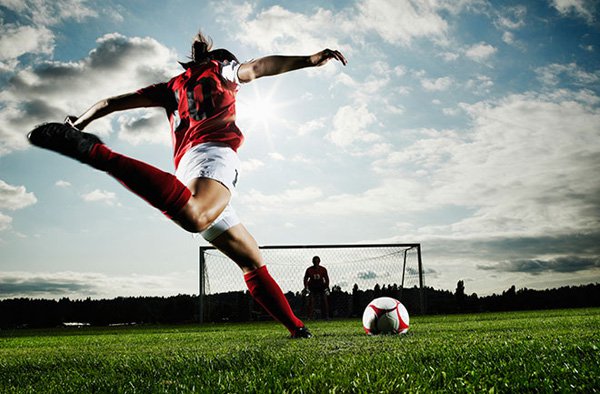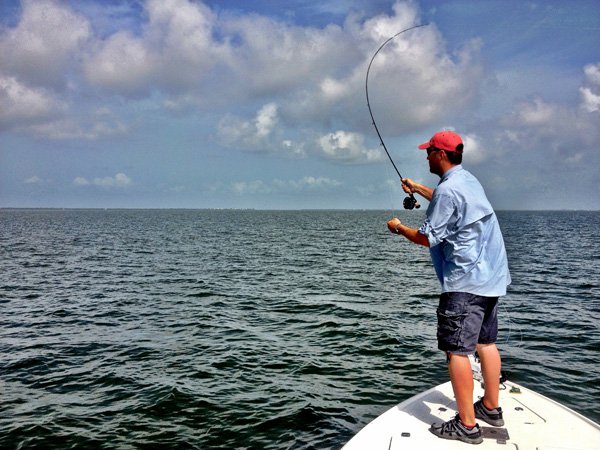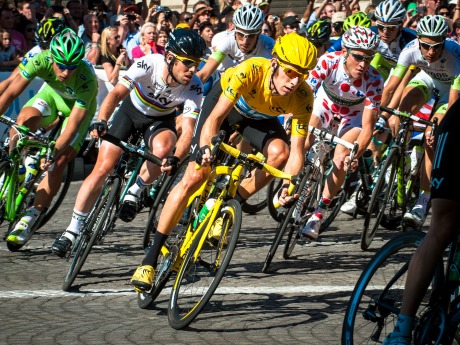Harness and foot-straps
Question
QUESTION: Hello!
I have a couple of questions:
1. Harness lines position on boom.
With a 5.9 sail and a 220 cm boom, if I keep the front line positioned at about 15" from the mast and the 2nd at about 4-6" from the first( there are different methods, but all seem to to yield the same position) it seems to me that the leverage of my hands against the pull of the wind is minimal. In fact, whether I am using the harness or not, the pull is so strong that either my back arm is ripped forward by the swinging sail, or, if I am hooked on the harness, my whole body is pulled forward. In both cases, I fall or I have to engage in some chinese circus contorsions in order to stay afloat.
Perhaps I am not leaning enough off the board and
I will try different positions next time, but I'd like to grasp the physics of this: the physics of the lever explain why it takes less force to pull a door shut the farther away from the hinges I apply the force.( In fact, the handle is the farthest point!) The sail/boom mechanism is much the same : when the wind wants to push the sail outward, it should take far less force to oppose it ( sheet in) the farther away I grip the boom from the the mast/boom junction ( the door-hinges),but I have never seen anybody gripping the boom that far from the mast!All sailors seem to grip the boom at about one third from the mast/boom junction. I wonder why. Am I missing anything here?
2. Foot-straps.
On my Rio, there are 3 positions : beginner, intermediate and advanced. I found the beginner position totally useless, as the front strap is so close to the mast that it is not only useless, but also in the way. So I use the intermediate position. Lately, I have been able to start planing, albeit somewhat hesitatingly, but, contrary to the "book" procedures, I find it a lot easier to start slipping into the back strap first and then planing with the front foot outside the front strap, just forward of it, towards the rail of the board. I simply cannot work my front foot into the strap without upsetting the balance and losing control of the board, so I gave it up.
Given the fact that this is good enough( for me!) for planing, I wonder what is the use of the front strap and if I should not perhaps remove it altogether.Incidentally, these front straps are annoyingly in the way when I try to gybe, because they prevent me from smoothly shifting both my feet backward in order to have some leverage against the wind when I push forward on the sail to have the board veering in the new direction.
3. Mast-foot position.
Of the 3 available positions, Starboard recommends the front-most one as ideal for " early" planing, but then it recommends the most backward one for advanced sailors, who are the ones who plane most and would therefore require the best position for " early" planing ! . As usual, with so much technological, sales-oriented dust in the air, I am confused, both on theoretical and practical grounds.
On practical grounds, I find the full forward position not much helpful for planing, as the nose of the board all too often sinks into the water, especially with choppy conditions and this arrests the planing.
On theoretical grounds, if the weight on the front ( the cooler of beer recommended by some!) helps the back to rise off the water, I don't see how the front-most position should be the best for " early" planing, because once the back is off the water, then the front may all too often sink in...Why isn't the intermediate position recommended as the best for " early" planing?It would allow the tip of the board to rise more over the chop, while the speed of the planing board would be sufficient to keep the back above the water.
As usual, I'd appreciate your comments
Thank you
Franco
ANSWER: Hey Franco,
There could be a few different reasons why you are getting pulled so hard while trying to sheet in. 1) Harness lines not placed properly 2) Too much wind for the sail size 3) Oversheeting for the conditions
To place your lines in the proper position try this; Rig your sail for the current conditions. Stand the sail up and sheet in lightly. Tip the mast towards you just a bit and try holding the boom with just your forefingers about 6-8 inches apart. You should be able to find a nice balance point where the sail just sort of floats. With the sail floating, work your fingers closer together until you find the point on the boom where you are still balancing the sail as it floats and your fingers are together. This is the point on the boom that is directly connected to the center of effort of the sail. When you see sailors with their harness lines really close together on the boom, this the point they have found for optimal balance.
Now set your front harness line about 2-4 inches forward of this point and the back line about 2-4 inches back from this point. Go out and get hooked into the harness. Be sure to set both sides with the above method. If the sail seems to be pulling on the front line (you have to keep pulling with your front hand), then move the front line forward about 1/2" at a time until the sail seems balanced. You may need to move the back line at the same time. If you are having to pull extra hard on the back hand, then move the back line back 1/2" at a time until you find the balance point. In theory and with practice, you should be able to remove both hands from the boom while hooked into the harness. Try just your front hand at first. If the sail pulls forward, move the front line forward. If it pulls back, move the front line back. Now try letting go with the back hand. Same scenario as the front for adjustment of the back line.
As for your footstraps; One of your main problems with not getting your front foot into the strap could be the unbalanced setting of your harness lines. Get your harness lines dialed in before making adjustments to your footstraps. Once you have your harness lines dialed in fairly well here is the way to get into the front strap. "It should always be the first strap you get into" (going into the rear strap first is like going from step 1 to step 4, skipping steps 2 & 3 Good sailing habits come from following the steps in their proper order).
1) Bear off the wind to increase board speed. Back foot should be just in front of the rear strap and centered on the board. The front foot should be just in front of and maybe just a bit off to the outside of the front strap.
2) Bend your knees so that you can hang most of your upper body weight from the boom (this will be much easier with the lines dialed in). Shift your weight slightly back so that it is more on your back foot. Put a little pressure on your back toes to keep the board from steering upwind.
3) Now slide your front foot back and into the front strap. Now straighten out your front leg a bit and sheet in to increase board speed. You should feel a definite increase in board speed.
4)With everything flowing smoothly your weight slightly forward, slip the back foot into the rear strap. Now straighten out both legs with a slight bend in the knees to absorb chop. This takes your weight off the boom and you start counteracting the pull of the sail to drive the wind power from the sail, through your body, to the board.
To increase board speed even more, straighten out the front leg buy pushing on your front toes and pulling in your back foot just a bit. This shifts your weight back a bit on the board and gives you more leverage on the sail. More leverage on the sail means more power against the fin which equates to more speed.
Mast-foot position is directly related to the amount of wind and the size of your sail. Much to the detriment of all sailors, "early planning" is NOT the early stages of planning. It is simply being "able" to plane in light winds, which means a high enough volume board with a large enough sail to plane in light winds. The term is misused and misunderstood by many.
At this point, let's forget about the term "early planning" and focus on mast-foot position in relationship to the conditions. If it is light wind (8-12kts), the foot should be somewhere in the forward position. This allows for going upwind easier, balances the sail/sailor weight better on the board, and keeps you away from the footstraps for easier lightwind maneuvers. If the winds are moderate (12-20kts), the foot should be somewhere near the center of the mast track. You should have enough power to plane the board, hook into the harness, and get into the footstraps. If the winds are on the light side of moderate (12-15kts), have it a bit forward of center. If the wind is on the high side of moderate (15-20kts), have the foot just a bit back of center. If the winds are in the high wind range (22+kts), then move the foot farther back on the board. Minor adjustments should only be 1/2" at a time.
Hope this helps.
Keep on sailing,
Windlover
---------- FOLLOW-UP ----------
QUESTION: Hi!
Thank you! Just wanted to make sure about the Front/Back terminology.
1. I assume the 揻ront?line is the one closer to the mast and the BACK line the one farther away.
You are saying that if the pull is stronger on the FRONT line I should move it a bit Forward, i.e. towards the mast, right? Conversely, if the pull is stronger on the back line and you say that I should move it a little BACK, do you mean 1) towards the mast or 2)in the opposite direction?
2. AS to the front foot-strap problem, your logic makes sense . In fact, if I slip the back foot into the rear strap first and then I try to slip the foot into the front strap, I noticed that the position of the harness lines from which I hang forces me to stretch my body DIAGONALLY towards the mast . It is sort of ackward and it destabilizes me. Probably the harness lines should be a little bit more centered on the boom, so that the ideal line between the hook and the board should fall more vertically between the front and rear feet, with the front leg almost vertical above the strap.
3. Also, when you say that the full forward position of the mast-foot is good for light winds and it keeps me away from the front straps, it dawns upon me that trying to use the footstraps when the mastfoot is full forward, could be the reason why I have to extend my body so much forward in order to work my foot into the front strap. May be the mast is too far from the strap and the full-forward position is not designed for using the straps. In light winds, anyway, there is less of a need to use the straps, as I am less likely to plane.
Your clarifications/comments are much appreciated as usual.
Thank you again
Franco
Answer
Hey Franco,
All references to location of harness lines are based upon the front of the boom being where it connects to the mast and the back of the boom being the clew of the boom (where the sail attaches to the boom). As mentioned before, find the balance point on the boom in regards to the center of effort of the sail. Adjust the lines forward (towards the mast) or back (towards the clew).
In regards to the footstraps/mast foot position; Just remember this simple rule, "If you are not planning, you don't need the footstraps". Thus, in light winds, mast foot forward, no planning, no footstraps.
YES, you can and will use your harness to reduce the pull on your arms for longer sailing times, even in light winds. But only when you are able to start planning and you move the mast track to the center or rear position, will you be needing the footstraps.
Hope this helps.
Keep on sailing,
Windlover
obrien sensation windsurfer
Mistral Garda base attachment question


